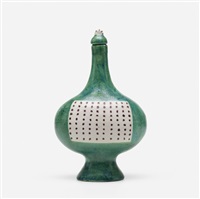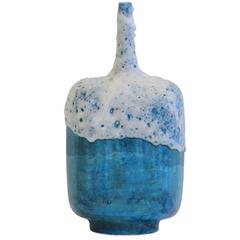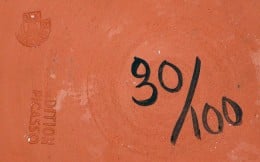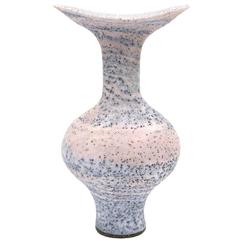 |
| Jackson Pollock |
I recently watched a documentary titled
Mural: The Story of a Modern Masterpiece. It's a film about a famous Jackson Pollock painting commissioned by Peggy Guggenheim and gifted to the University of Iowa in 1948. The painting is an immense (8’ 1 1/4” x 19’ 10”) abstract mid-century masterpiece, colorful and layered. Dark abstract figures in a procession of movement drift across the canvas while the surrounding atmosphere comes alive with typical intense Pollock brushwork infused with energy and color. What is it about certain artists that draws you in and comforts your senses?
Guido Gambone is one of these artists. Guido was born in 1908 near Avellino, Italy. When he was a teenager his family moved to Vietra, an area well known for pottery. He soon quite school and took an internship at Francesco Avallone's ceramic manufacturer. Later he trained at ICS and eventually became the director. Over the years the founded his own pottery manufacturers La Faezeralla and La Tirenna. Guido became one the primary firgures in the world of Modern ceramics.
With Guido, his pottery needs no narration. The images alone set his work apart from the masses and tell the story of a mid-century nonconformist that defies not only his time but ours as well. His sense of color and lines, proportion and fluidity, abstract-ism, cubism, sculpture and playfulness never tires of being looked at. The outward effect is simple only in the way it makes you feel. The color pallets of the glazes he so aptly utilizes were non existent in the middle of the 20th century. He created these to suit a modern movement that was started in his head alone. He perfected the application as well. Sharp geometrical lines and form, crackle, lava glaze and multi-layer glaze applications in the most striking hues. His finishes can be stunningly crisp or perfectly soft and muddled for an added dreamy effect.
There is no question when looking at a Guido Gambone that it is handmade and free-formed. That is part of the charm. He exhibits a contemporary earthiness that could have been lost in the drab violets, maroons and the cobalt's of its time and yet comes to life with color, refinement, imagination and skill.
Guido Gambone

































